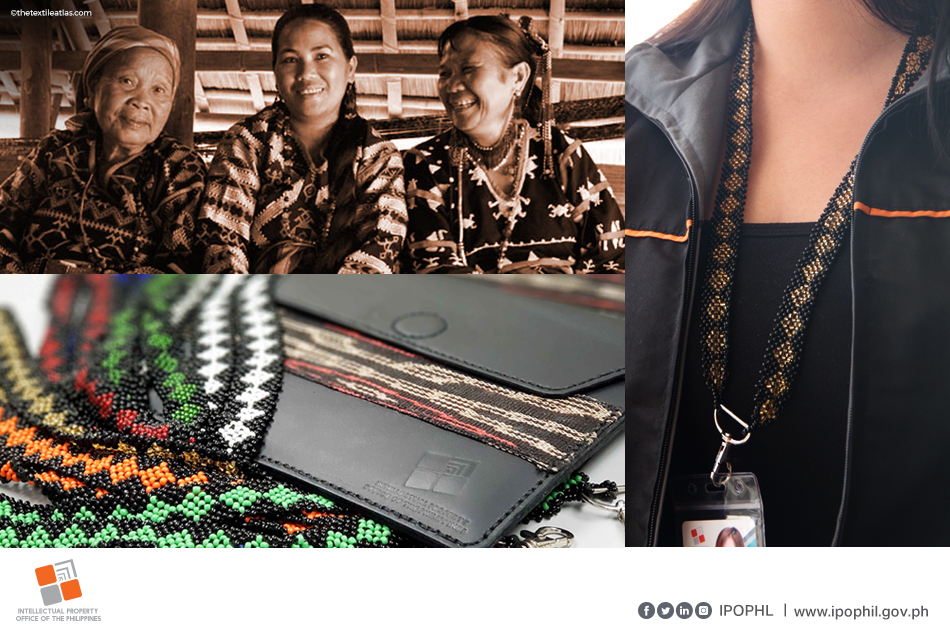Traditional Knowledge in a necklace: IPOPHL takes indigenous peoples, women advocacy to heart
31 October 2018 |

Like any good accessory, the dual-colored, beaded lanyards worn by IPOPHL employees never fail to catch attention, and attract a compliment - it’s a conversation piece. But unlike just an ordinary accessory, the lanyard carries with it a story and a ‘dream’.
Inspired by a token bearing a traditional design of the T’boli, an indigenous cultural community found in South Cotabato in Southern Mindanao the IPOPHL Director General Josephine R. Santiago commissioned the same to be made for every employee in the spirit of supporting indigenous peoples and women.
Among the cultural art forms the T’boli women are known for is the age-old practice of T’nalak weaving. T’nalak refers to the abaca cloth woven by the women with inimitable designs that have been passed on to them by their ancestors through their dreams, earning them the title of ‘Dreamweavers’.
Apart from this renowned traditional weaving practice, the industrious T’boli women make other accessories with their own design, including beaded jewellery and crafts, now donned proudly by IPOPHL employees.
Drawing from their rich source of traditional knowledge, the women proposed designs for the handmade ID laces. The final design on the IPOPHL lanyards is a diamond pattern of bright-colored beads, set against a beaded black border.
More than supporting local craftsmanship, IPOPHL takes to heart the preservation of traditional knowledge of indigenous peoples, having hosted dialogues and workshops with members of indigenous cultural communities on how intellectual property may be used to protect traditional knowledge and traditional cultural expressions.
In fact, the IPOPHL and the National Commission on Indigenous Peoples have inked Joint Administrative Order No. 1, s. 2016, which aims to provide harmonized rules and regulations, and institutional arrangements between the two agencies to protect the intellectual creations of the indigenous peoples and indigenous cultural communities, prevent misappropriation, and encourage tradition-based creations and innovations.



